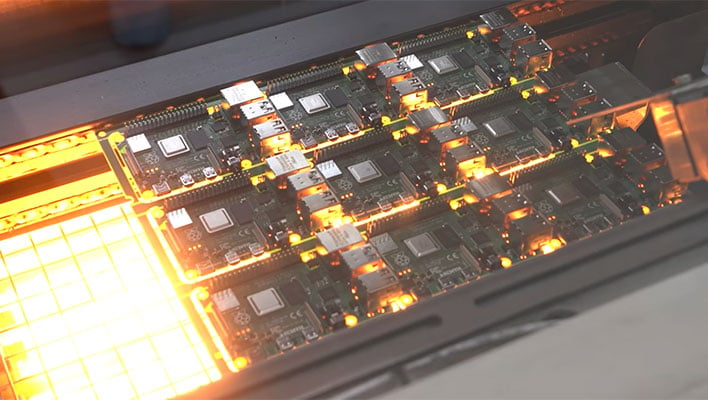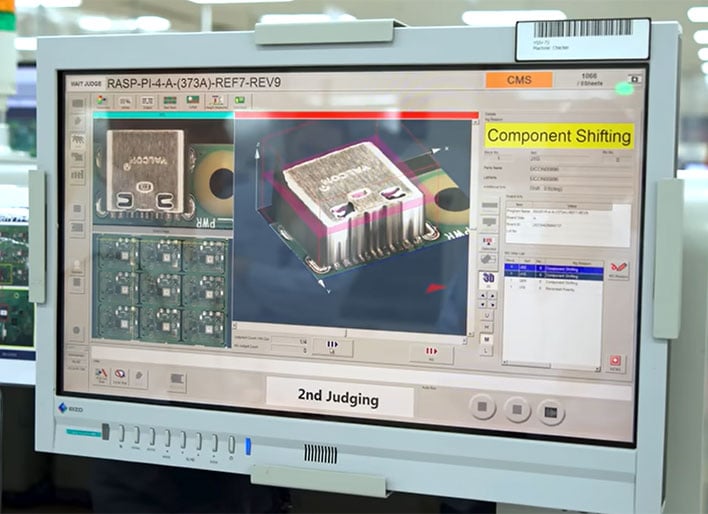Raspberry Pi Factory Tour Shows How The Popular SBC Is Baked And Served To Consumers

Sony’s Tech Center in Pencoed, Wales, is the facility where nearly 50 million Raspberry Pis have been produced over the last decade. Now, for the first time, we get to see the high-tech production line for Raspberry Pi 4B devices on video, thanks to YouTuber and RasPi enthusiast Jeff Geerling. His behind-the-scenes factory tour provides insight into the production process behind these hugely popular single board computers (SBCs).
The beginning of the RasPi production process starts in the Sony factory’s SMT (Surface Mount Technology) area. Specialized machines receive a panel of nine RasPi PCBs as input, which first get screen-printed with solder traces. Next, the surface mount components are added to the boards in size-order, starting with the smallest first. Geerling’s video voice-over explains that lower profile components are added first, as the air-powered component insertion machine needs to be very close to the PCB to be effective. It is interesting to see the large chips like the main SoC fed into the component placing machines on a kind of bullet belt.
After every component has been placed, the PCBs make a journey down the production line to reflow ovens. These start at 150 °C at the entrance and eventually hit 260 °C before exit. Yes, here the Pis are literally baking, and the reason is to make sure moisture is removed and the solder ‘flows’ to physically and electrically bond the components to the PCB. A slow and steady conveyor belt transports the Raspberry Pis through the quite long oven.

After the Pis are cooled, it appears to be the first chance for quality control checking. Production line cameras check for both correct placement and absence of components vs reference designs. Geerling explains in voice-over that problem boards are pulled for manual rework.
That isn’t the end of the RasPi making process. There are still larger ‘through hole’ components to add to the PCBs, things like Ethernet ports, USB and HDMI ports etc. These components are placed by a line of robot arms which have been programmed to mimic human ‘skills’ like adding a little wiggle to a component to seat it securely. The robots are a relatively recent addition to the factory, replacing manual component placement line workers. A solitary human through-hole component worker appears to work in remedying any errors of component omission after the robot production line.

Next, the through-hole components need to be soldered, and according to the video the nearly completed SBCs enter another oven which is up to 275 °C. Directed soldering jets make sure everything is well-connected. A cooling line is used to safely bring the SBCs back to room temperature. Finally, the oven-fresh Pis are again checked for spot repairs and go through to customer ready-testing. Another automated process takes care of QC-passed Raspberry Pi packaging.

Geerling commented that the Raspberry Pi production line he saw used at least 15 of the eponymous SBCs to control and monitor the machinery. Thus, Raspberry Pis were, in effect, making more Pis. The production line shown in the video outputs nearly 200,000 finished Pis per week.
We recently reviewed DFI's powerful, and pricey, AMD Ryzen-powered RasPi rival, the PCSF51 SBC.

